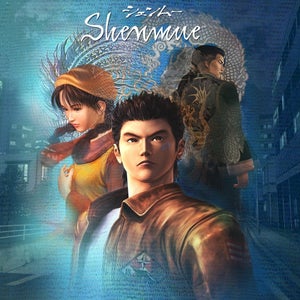Shenmue (video game)

| |
| Shenmue | |
| Developer | Sega AM2 d3t (Windows, PS4, Xbox One) |
|---|---|
| Publisher | Sega Tec Toy (Dreamcast in Brazil) |
| Platforms | Dreamcast, PlayStation 4, Windows, Xbox One |
| Released | Dreamcast Japan: December 29, 1999 North America: November 8, 2000 Europe, Oceania: December 1, 2000 Brazil: 2000 or 2001 PS4, Windows, Xbox One Worldwide: August 21, 2018 |
| Added to Museum |
Windows: August 21, 2018 Dreamcast NA: November 8, 2018 |
Shenmue, known as Shenmue Chapter 1: Yokosuka (シェンムー 一章 横須賀 Shenmū Isshō: Yokosuka) in Japanese, is the first game in the Shenmue series. It was released for Dreamcast in Japan on December 26, 1999, in North America on November 8, 2000, and in Europe and Oceania on December 1, 2000.
A high-definition version of the game was released, packaged with Shenmue II. It was developed by d3t and was published by Sega for Xbox One, PlayStation 4, and Windows, on August 21, 2018.
Plot
A teenager named Ryo Hazuki travels through Yokosuka, Japan in 1986 for information about the man who killed his father.
Playable games
At You Arcade, you can play Sega arcade games.
- Darts 7
- Excite QTE 2 - button pressing quick-time-event game
- Hang-On
- QTE Title - button pressing quick-time-event boxing game
- Space Harrier
There are also bars, gambling parlors and stores where you can play billiards, Darts 7 and Neo Darts, slot machines, and collect capsule toys.
Development
Yu Suzuki of Sega AM2 worked on a prototype for Sega Saturn in 1995, titled The Old Man and the Peach Tree. The prototype addressed some of the problems that Yu Suzuki saw in role-playing games, or RPGs, of the time. These included such issues as players continuing to walk when they bumped into walls and the inability to talk to non-player characters without facing them.
The Old Man and the Peach Tree was set in the 1950s and followed a young man named Taro who traveled to the city of Luoyang in China in search of a kung-fu master named Ryu. One of the cinematics had a man skipping rocks across a lake, hitting a fish with every skip, sometimes hitting two or three fish with one stone. After seeing this, Taro was certain that he had found Ryu.
In 1996, The Old Man and the Peach Tree was expanded into a Sega Saturn RPG based on the Virtua Fighter engine. It was titled Virtua Fighter RPG and was still set in China, with the plot centered around the fighter Akira. It was to be told in four acts: sadness, departure, fighting, and beginning anew. The story was to tell Akira's loss of his father, which led to him traveling to China to fight in a heroic battle. It then would chronicle his journey beyond that. He brought in a movie director, a playwright, and a screenwriter to create the story.
It was never developed beyond a prototype as the team opted to target Sega's then-upcoming system, the Dreamcast, and decided to create a game around original characters. The game began under the codename Guppy and then became known as Project Berkeley. It was finally given its final title, named after a cherry blossom tree in Guilin, Shenmue.
As the project didn't have a concrete game plan, it kept getting larger until it eventually expanded to a story with eleven chapters. Toshihiro Nagoshi was a supervisor on the Shenmue team when it was first being developed at Sega AM2. As the game became larger, he left to manage a new studio, Sega AM11 in September 1998.
Sega AM11 became Sega Software R&D 4 in May 1999. During this time period, Nagoshi was called in to finish the Shenmue project, which was in a state of perpetual development. For the final six months of development, Nagoshi had to serve as producer and director in order to finish the game.
The development of the game, which included the development of part of Shenmue 2 and future titles in the series, was the most expensive game ever made at the time, at $47 million USD. When the game didn't sell enough to pay for its development and marketing budget, it became clear that Sega could not afford to make eleven Shenmue games. Thus, while the first Shenmue contained only one chapter, the sequels contained multiple chapters.
Shenmue: The Movie
Shenmue: The Movie is a feature-length machinima film that is comprised of cutscenes and gameplay footage of Shenmue. It was released in theaters in Japan on January 19, 2001. Because Shenmue wasn't released on Xbox, a DVD containing an English translation of Shenmue: The Movie was included with the Xbox version of Shenmue II.
Version differences
The Western releases of Shenmue for the Dreamcast have English language voices. The Windows, Xbox One, and PlayStation 4 versions have options to use both the Japanese and English voice tracks.
The PlayStation 4, Xbox One, and Windows versions have high-definition visuals in a 16:9 aspect ratio, except in cutscenes which remain in a 4:3 aspect ratio.
Sequels
Shenmue II was released for Dreamcast in 2001 and for Xbox in 2002. Shenmue III was released for PlayStation 4 and Windows in 2019.
Legacy
Shenmue was a pioneering game that inspired many later open-world games. Sega's own Like a Dragon series would employ some of the gameplay from Shenmue and Shenmue II, such as the open-world nature of the game, the ability to play Sega arcade games and collect Sega toys, and the ability to optionally learn new martial arts moves from non-playable characters.
Yu Suzuki coined the term quick time events, or QTEs, for the timed button prompts in Shenmue. This term has since become ubiquitous in the video game industry.